Content

Ferman beads: the leading expert in removing iron and manganese from water
Update: 08/08/2024
Share:




In the journey to find optimal solutions for this issue, VITECONE Science and Technology Joint Stock Company - a pioneering unit in researching and developing water treatment materials has discovered a breakthrough solution: Ferman Beads - a powerful weapon in treating water contaminated with Iron and Manganese. Researched and produced by VITECONE's top experts, Ferman Beads not only provide high efficiency in water filtration but also ensure environmental friendliness. Let's explore the details about Ferman Beads and the benefits it brings in this article.

I. Which Water Sources Are Prone to Iron and Manganese Contamination?
Household water sources nowadays mainly come from two main sources: drilled wells and tap water. In addition, many businesses, production units also use surface water from rivers, lakes, ponds, canals to serve production and processing activities. These water sources are at risk of being contaminated with Iron, Manganese, and other heavy metals or impurities.
1. Drilled Wells Water
Drilled well water is one of the water sources at high risk of being contaminated with Iron and Manganese. Since drilled well water is directly taken from deep underground water veins beneath the ground, it directly contacts with geological layers containing Iron and Manganese, making it easy for these two metals to dissolve into the water.
2. Surface Water
Surface water, including river water, lake water, pond water, and canal water, also has a high risk of being contaminated with Iron and Manganese. The main reason is the erosion of soil and rocks containing Iron, Manganese into the water. In addition, industrial, agricultural, and human activities also contribute to the increase in the concentration of these two metals in surface water through uncontrolled discharge processes.
3. Tap Water
Although tap water has undergone treatment at water treatment plants, it can still be contaminated with Iron and Manganese. This can happen due to various reasons, including:
- Inadequate water treatment processes:
In the water treatment process, completely removing Iron and Manganese can be challenging if the treatment system of the plant does not achieve high efficiency or due to outdated treatment technology. Nowadays, water treatment plants often use methods such as oxidation, precipitation, and filtration to remove Iron and Manganese, but in some cases, the concentration of Iron and Manganese may still remain in the water.
- Corrosion of water pipes:
Metal water pipes, especially iron pipes, can corrode over time, leading to iron particles leaching into the water. When water passes through these pipes, Iron and Manganese from the pipes can dissolve into the water, causing contamination.
- Old water storage tanks and reservoirs
Old water storage tanks and reservoirs, especially metal tanks, can also be a source of Iron and Manganese contamination. If these tanks are not regularly cleaned and maintained, these metal particles can settle and dissolve into the water.
- Contaminated source water
The source water of water treatment plants, including river water, lake water, or groundwater, may contain Iron and Manganese. If this source water is not efficiently treated before being supplied to the water system, these metals may still remain in the water provided to households.
II. How to Identify Iron and Manganese Contaminated Water
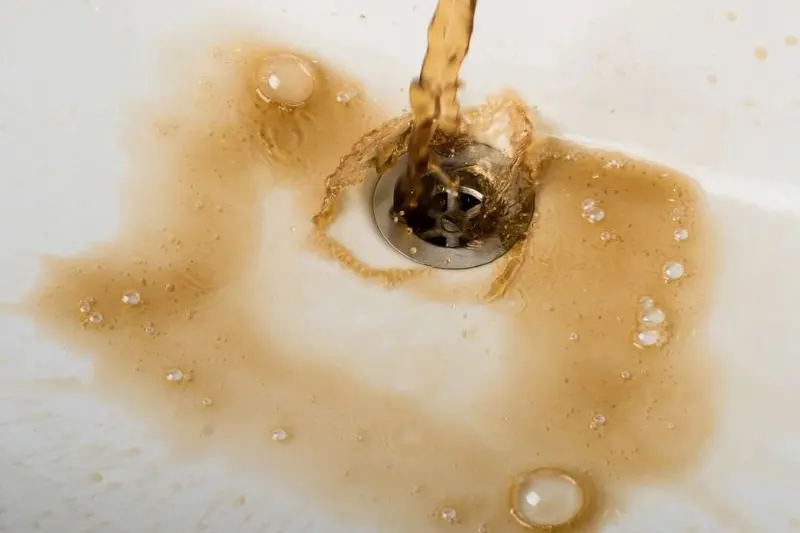
There are several ways to identify water contaminated with Iron and Manganese by observing the following unusual characteristics:
1. Observe Color and Taste
- Iron-contaminated water often has a yellow, brown, or brick-red color when iron precipitates, with a metallic or musty odor.
- Manganese-contaminated water often has a black or gray color when Manganese precipitates, and may have a musty or other unpleasant odor.
2. Observe Sediment and Deposits
If you see red or black sediments settling at the bottom of the container after letting the water settle, this is a sign of Iron or Manganese precipitation.
Yellow, brown, or black stains on water containers, sinks, and household items are also signs of water contaminated with these metals.
3. Test Water Using Scientific Methods
If you observe any unusual points in the water, to confirm whether the water is contaminated with Iron, Manganese, or other heavy metals, use rapid test kits or send water samples to laboratories for detailed analysis and accurate determination of the concentration of these metals.
One of the addresses providing rapid test kits and water testing services with detailed component analysis is Toan A Environmental Technology Joint Stock Company with a LAB room capable of testing, ensuring compliance with ISO 17025:2017 standards, licensed and using the capability certification stamp according to current AOSC regulations. For inquiries, please contact the hotline 0913.543.469.
III. The Harmful Effects of Using Iron and Manganese Contaminated Water
Iron and Manganese contaminated water can cause many serious issues in daily life, from affecting human health, damaging household appliances to reducing production efficiency.
1. Health Effects
Using Iron and Manganese contaminated water for a long time can cause various health problems, from affecting human skin, digestion to the nervous system. Specifically:
- Skin diseases
Iron and Manganese in water can irritate the skin, causing dryness, itching, and red rashes. Especially for people with sensitive skin, this condition can be more severe, leading to contact dermatitis.
Bacteria and microorganisms can thrive and grow well in Iron and Manganese contaminated water, increasing the risk of skin infections.
- Digestive diseases
When Iron and Manganese accumulate in the body through drinking water, they can cause digestive problems such as nausea, abdominal pain, and diarrhea.
- Nervous system effects
Long-term exposure to Manganese can lead to poisoning, causing damage to the central nervous system, resulting in symptoms such as insomnia, fatigue, memory loss, decreased motor skills, and other neurological disorders.
2. Daily Life Impacts
Not only does Iron and Manganese contaminated water affect health, but it also causes many repercussions in daily life:
- Damaging household appliances
Iron in water can cause yellow stains and rust on household appliances such as faucets, sinks, washing machines, and bathtubs. This not only affects aesthetics but also damages the appliances.
Iron and Manganese deposits can accumulate in pipes, causing blockages and reducing the efficiency of the water supply system.
- Impact on clothes and fabrics
Iron and Manganese contaminated water can dye clothes in brown, yellow, or black colors, damage the quality of the fabric, and make clothes wear out quickly.
3. Impact on Production and Industry
Iron and Manganese contaminated water also have a significant impact on industrial production activities. Specifically
- Impact on product quality:
- For the food industry: Iron and Manganese contaminated water can affect the taste, color, and quality of food. In the food production process, clean water is essential to ensure food safety and hygiene.
- For the pharmaceutical industry: Water quality is a critical factor in pharmaceutical production. Iron and Manganese contamination can lead to product contamination, affecting the effectiveness of medicines.
- Impact on production efficiency:
- Causing machinery blockages: Iron and Manganese can accumulate and cause blockages in industrial machinery and equipment, reducing efficiency and increasing maintenance costs.
- Corroding equipment: Iron and Manganese contaminated water can corrode metal parts of machinery, leading to reduced lifespan and efficiency of the equipment.
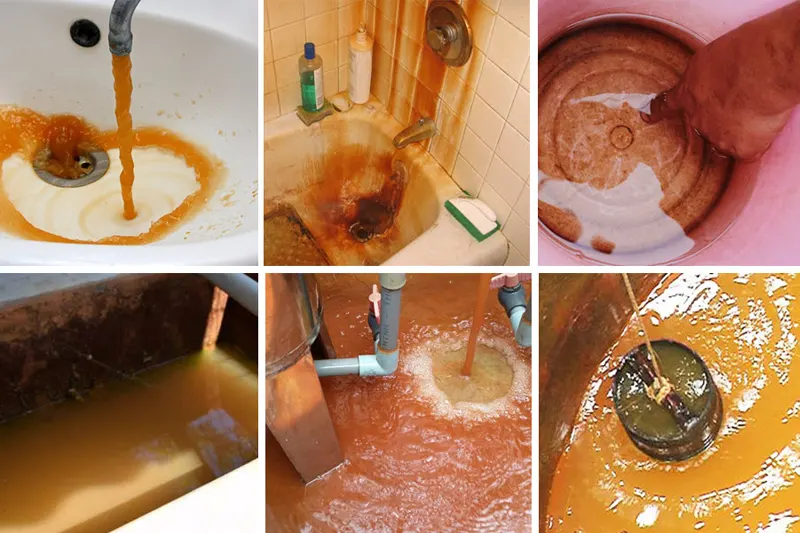
IV. Ferman Beads - Leading Expert in Iron and Manganese Water Treatment
There are various methods to remove Iron and Manganese from water such as using water filters, chemicals, and specialized filtration materials. Especially, VITECONE Science and Technology Joint Stock Company - a leading unit in researching and inventing water treatment materials has created Ferman Beads - an efficient and advanced material, trusted by many experts and consumers in treating water contaminated with Iron and Manganese.
1. What is Ferman Beads?
Ferman Beads are a type of filtration material with a purple-black color, specially designed to remove dissolved Iron, Manganese, Hydro Sulfide, and other impurities from water. The surface of Ferman Beads is coated with a high-activity Nano Manganese and Iron Gel layer, helping to effectively treat these metals.
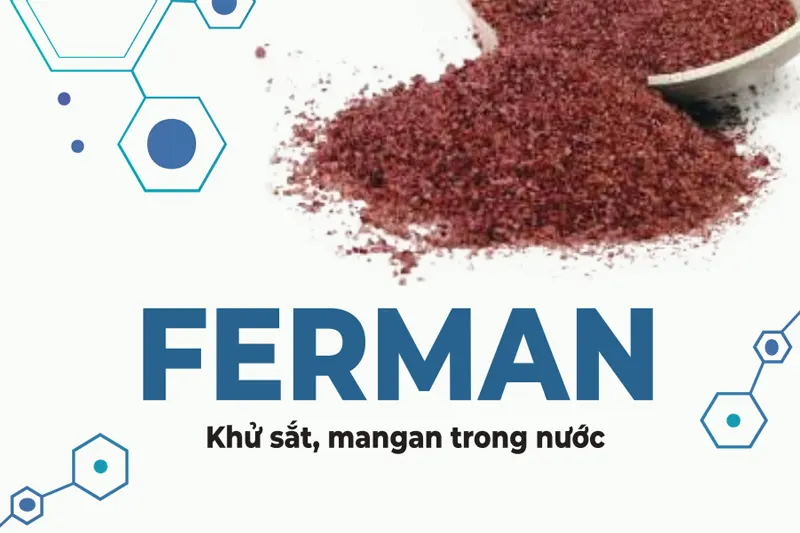
2. Composition and Structure of Ferman Beads
Ferman Beads are produced from natural minerals, mainly SiO2, which is chemically inert, resistant to chemical corrosion and abrasion. This material operates effectively at temperatures ranging from 5 to 80oC with high differential pressure, superior to traditional Manganese ores.
3. Mechanism of Action of Ferman Beads
Ferman Beads act as a non-soluble catalyst, promoting the reaction between dissolved oxygen (DO) and Iron compounds to form precipitates that can be easily filtered. When water containing Iron and Manganese passes through Ferman Beads, chemical reactions occur on the bead surface, transforming dissolved Iron (Fe2+) into insoluble Iron (Fe3+) and dissolved Manganese (Mn2+) into insoluble Manganese (Mn4+). These precipitates are then retained in the filtration system.
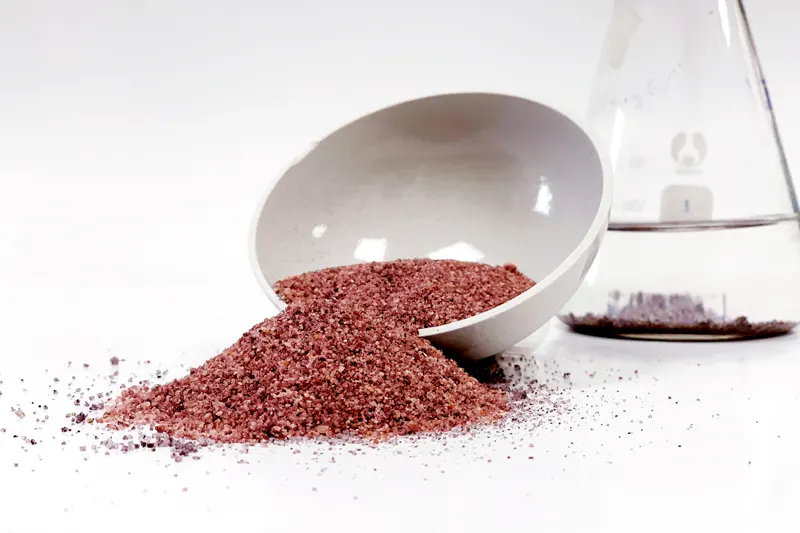
4. Advantages of Ferman Beads
- High filtration efficiency: Effectively removes Iron and Manganese, providing clean and safe water.
- Easy to use and maintain: Simple operation and maintenance procedures.
- Long lifespan: With regular regeneration, Ferman Beads can be used for a long time.
- Reasonable cost: Compared to other filtration materials, Ferman is relatively inexpensive.
- High durability: Resistant to high pressure and temperature, less susceptible to chemical corrosion and abrasion.
5. Applications of Ferman Beads
Ferman Beads can be used independently as a standalone filter to treat Iron and Manganese or combined with other filtration materials such as Quartz Sand, Anthracite in a filter column to treat raw water. This material can remove Iron and Manganese in groundwater with concentrations up to 25mg/L.
6. Technical Specifications of Ferman Beads
|
Bead size: 0.4 - 1.2 mm. Average moisture: 3%. Density: 1.4 kg/liter. Swelling rate in water: 2.26%. Hardness: 6.68. Operating pH: 6 - 9. Operating temperature: 5 - 80oC. |
Backwash rate: 30m3/h/m2 at 20oC. Maximum filtration rate: 25m3/h/m2. Minimum material layer height: 450mm in multi-layer columns or 800mm in a standalone Ferman filter column. Maximum adsorption capacity: 4mg/g for Manganese and 6.5mg/g for Iron. |
7. How to Use Ferman Beads
- Choose the appropriate type of Ferman: There are various types of Ferman with different bead sizes, depending on the intended use and filtration system capacity. Consult with experts to select the suitable type of Ferman.
- Install correctly: Ferman is often used in pressure filter columns or gravity filter columns. Proper installation is essential to ensure filtration efficiency and prevent material loss.
- Operation and maintenance:
- Regular backwashing: Regularly backwash Ferman to remove dirt and impurities adhering to the material surface, ensuring filtration capability. The backwash frequency depends on the water quality and usage flow rate.
- Regeneration: Ferman can be regenerated using a potassium permanganate (KMnO4) solution to restore filtration capacity. Regenerate Ferman periodically as recommended by the manufacturer.
- Replacement: After a period of use, the filtration efficiency of Ferman will gradually decrease. Replace with new Ferman when the filtration efficiency is no longer guaranteed.
8. Where to Buy Ferman Beads?

Ferman Beads - an effective and economical solution to remove Iron and Manganese in water is manufactured by VITECONE Science and Technology Joint Stock Company. If you need to purchase Ferman Beads, contact the hotline 0913.543.469 for advice from industry experts.
Choose Ferman to ensure clean and safe water for your family and business!
Update: 08/08/2024
Share:




Related news
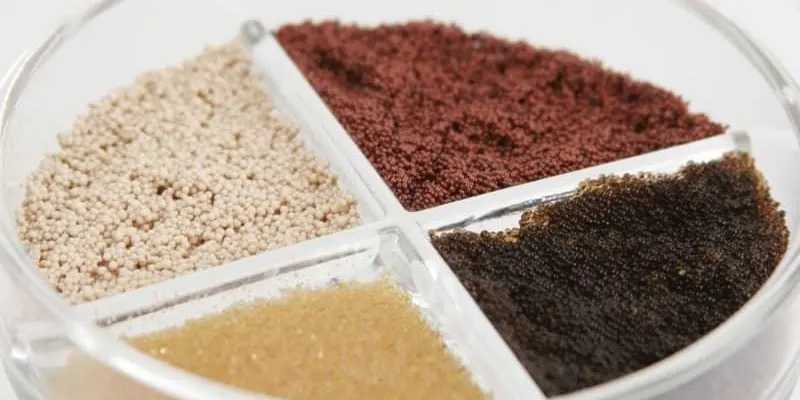
Ion exchange resin: Efficient and cost-effective water treatment
Developed since the early 20th century, ion exchange resin beads have become an indispensable part of the water treatment industry. With superior ability to remove impurities and harmful ions in water such as Ca2+ and Mg2+, ion exchange resin beads are also commonly referred to as water softening resin beads, leading the way in today's green technology race. Not only do they help improve water quality, but they also contribute to environmental protection and sustainable development. Let's delve deeper into the role and applications of ion exchange resin beads with Toan A JSC in the article below!
Created at: 19/08/2024

Ferman beads: the leading expert in removing iron and manganese from water
Amidst the increasing challenge of water pollution, it has become imperative to research and discover new environmentally friendly and highly efficient water treatment materials. This is particularly crucial as many households continue to rely on well water or surface water for their daily needs and activities. Notably, these water sources often have elevated levels of Iron and Manganese contamination, posing health risks and disrupting daily life. Developing effective solutions for treating water contaminated with Iron and Manganese is essential not only for ensuring clean water quality but also for safeguarding our environment.
Created at: 08/08/2024
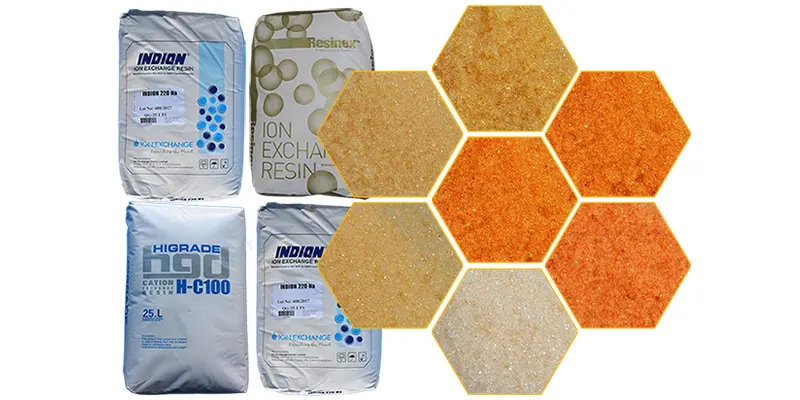
Resin is an organic substance with ion exchange properties, commonly used in water filtration processes to remove undesirable ions. Resin beads are typically made from synthetic polymers and have the ability to absorb and replace ions in water
What is Resin Bead, its properties, characteristics, and applications of this ion exchange resin will be the content shared by experts from Toan A. Let's explore the following content to answer this question.
Created at: 16/04/2024










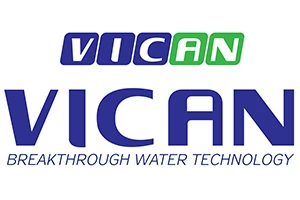






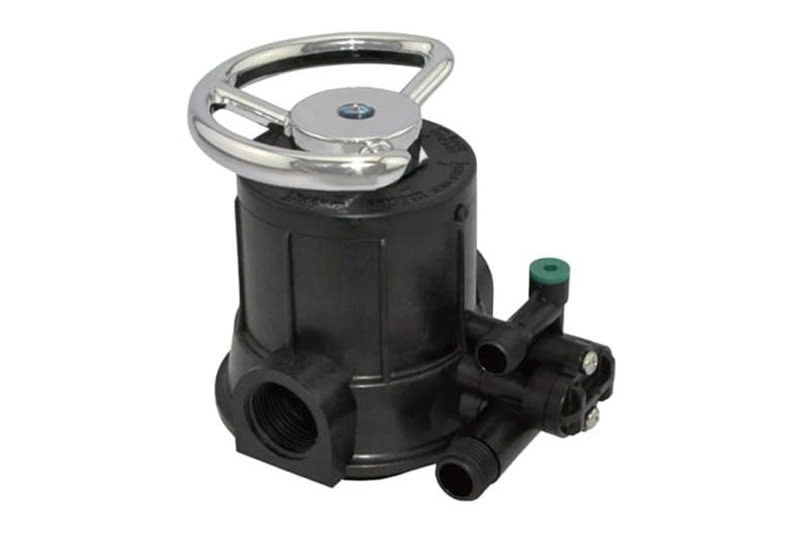
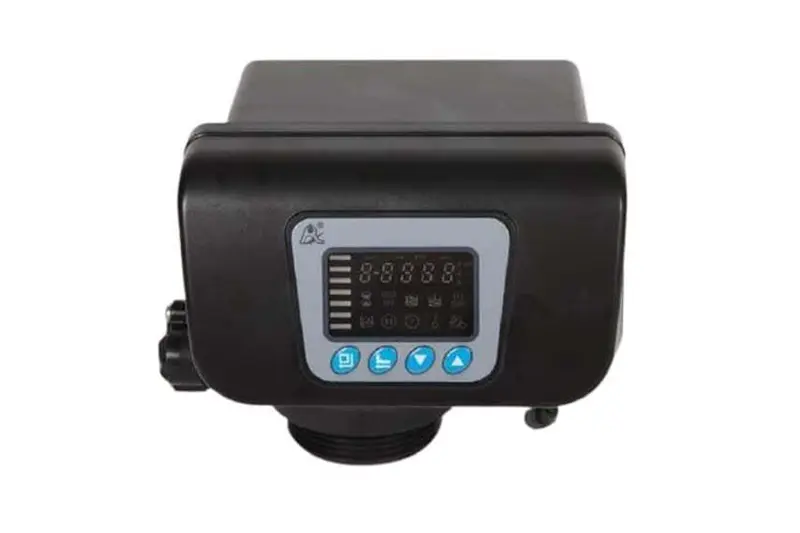




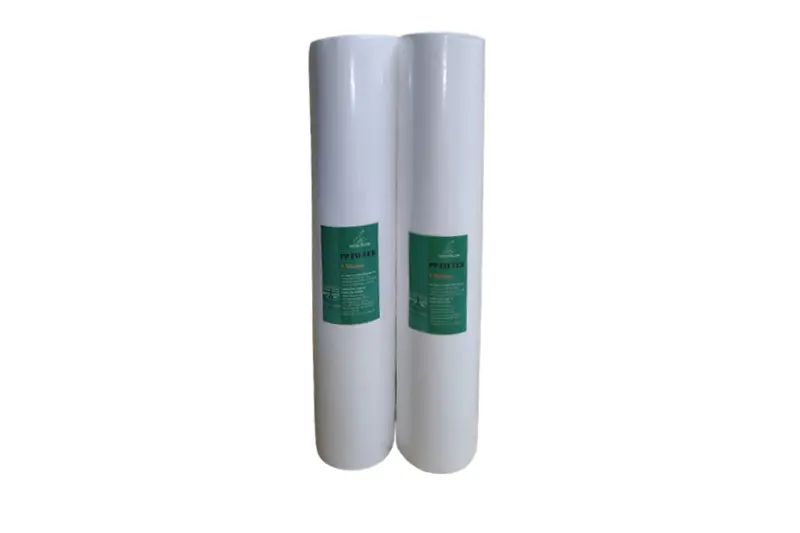



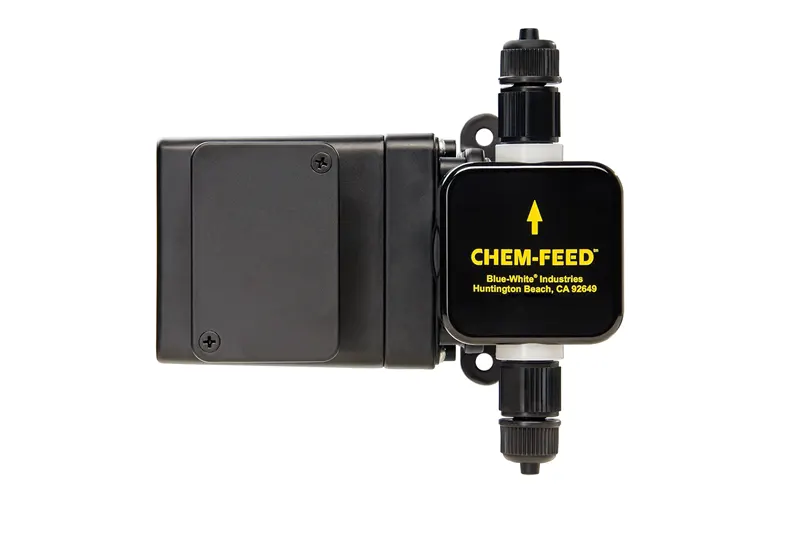
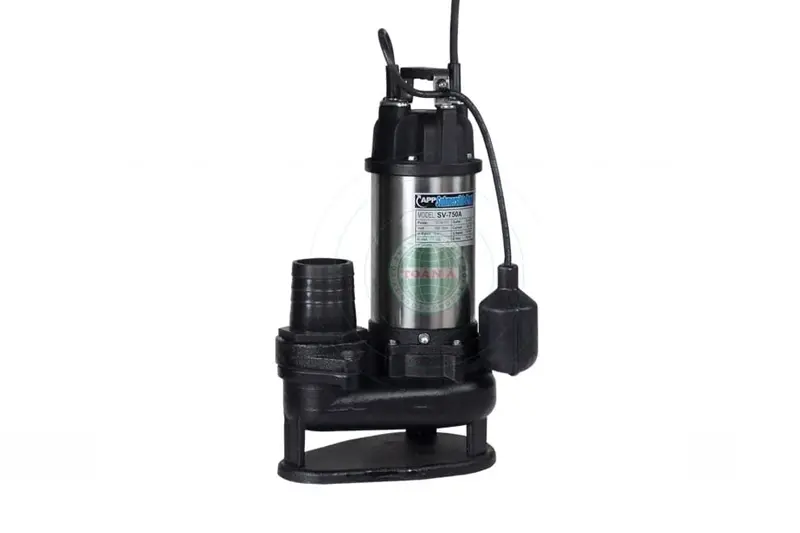



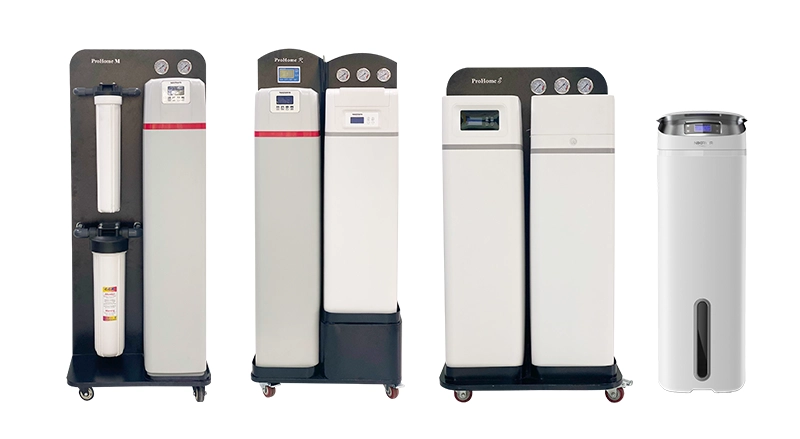
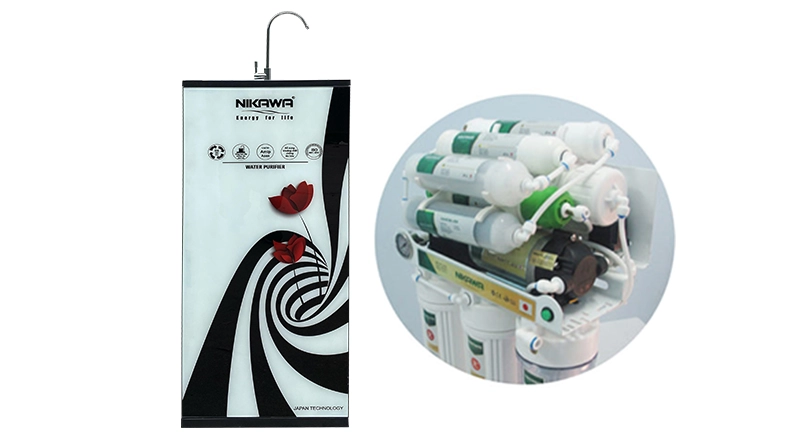
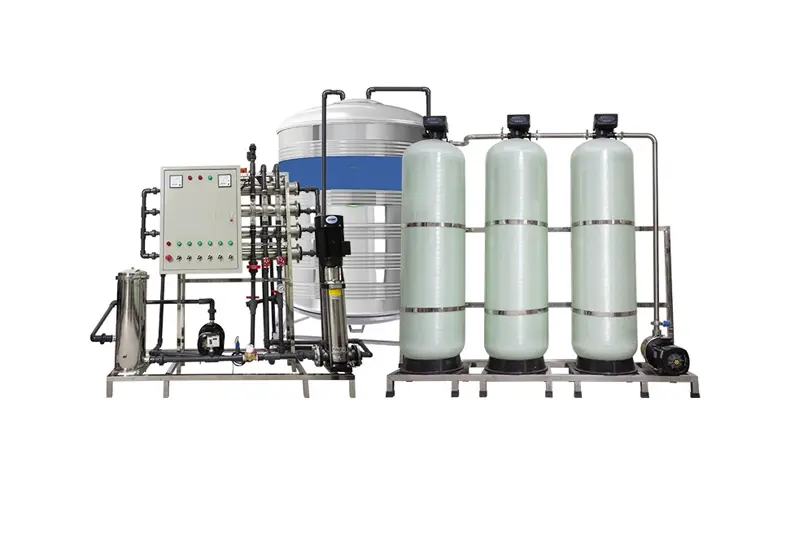
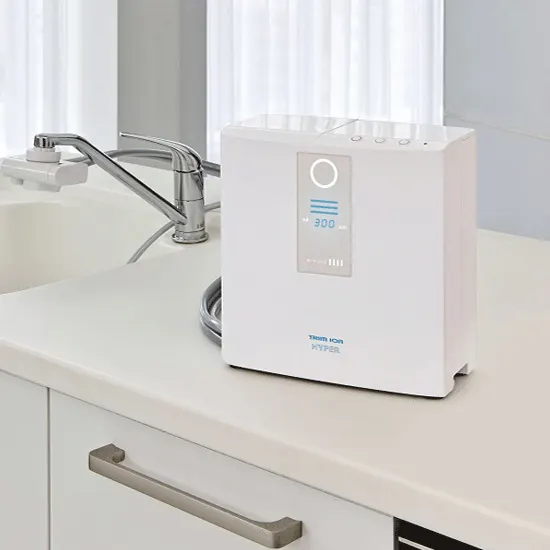
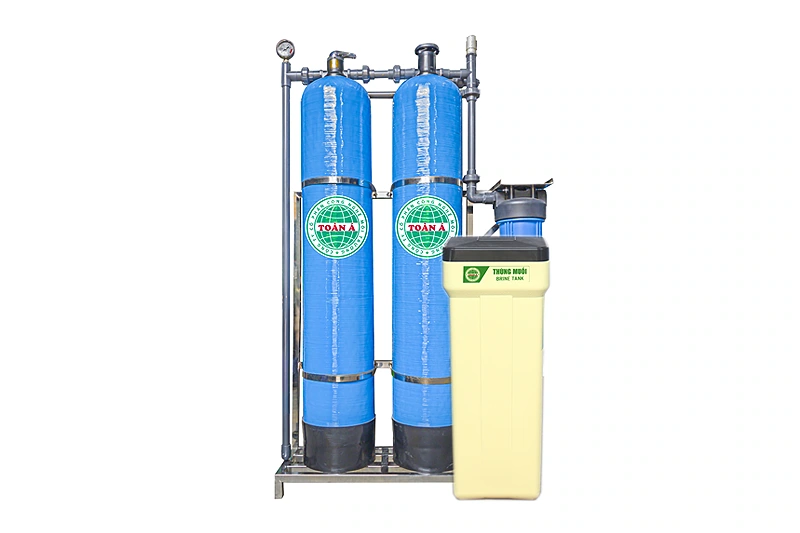


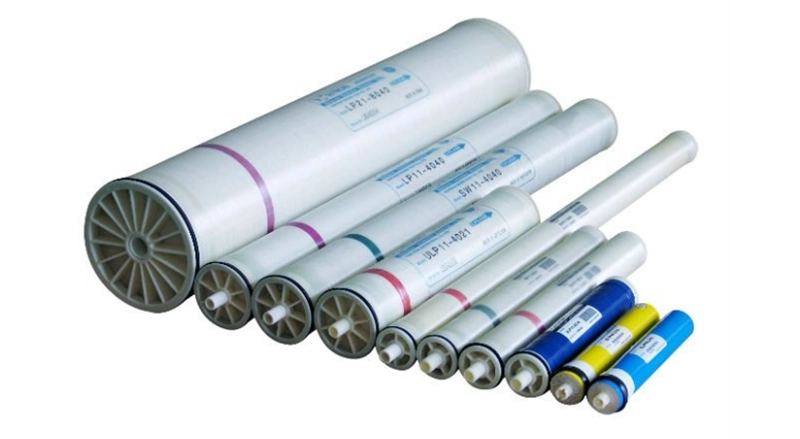
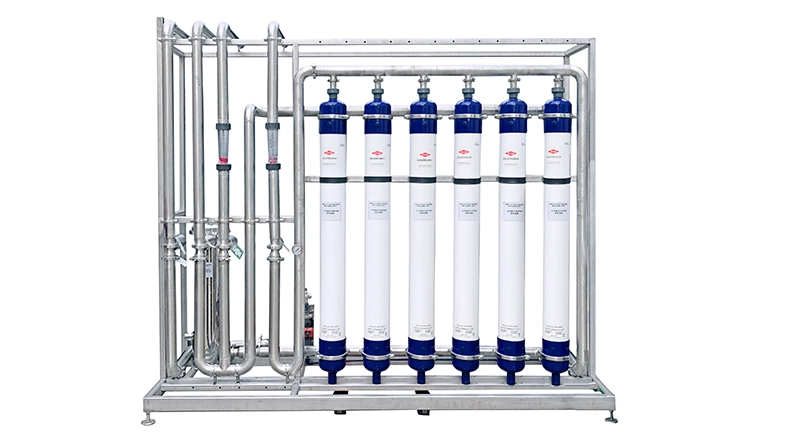


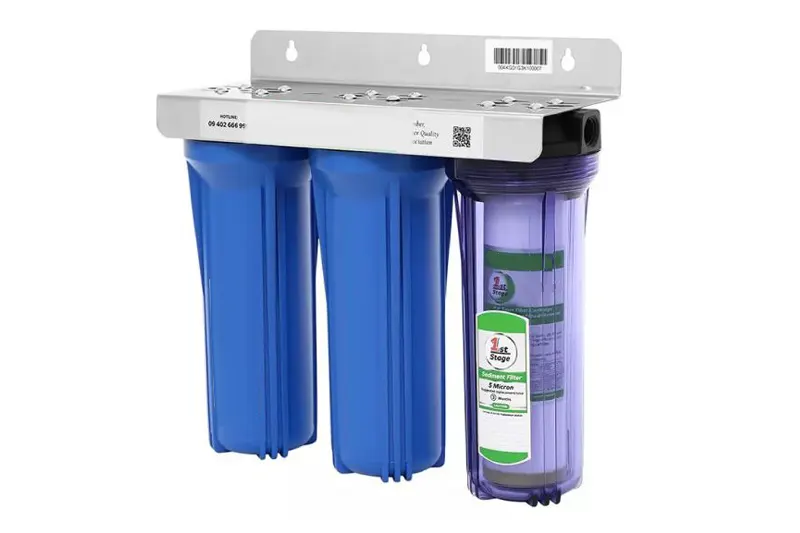

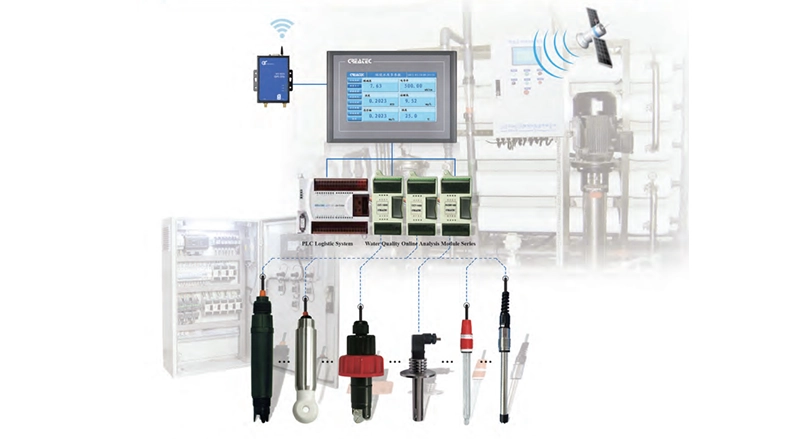
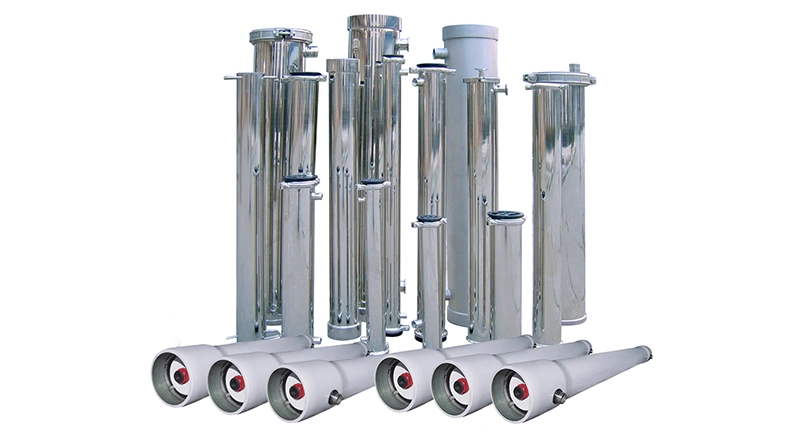
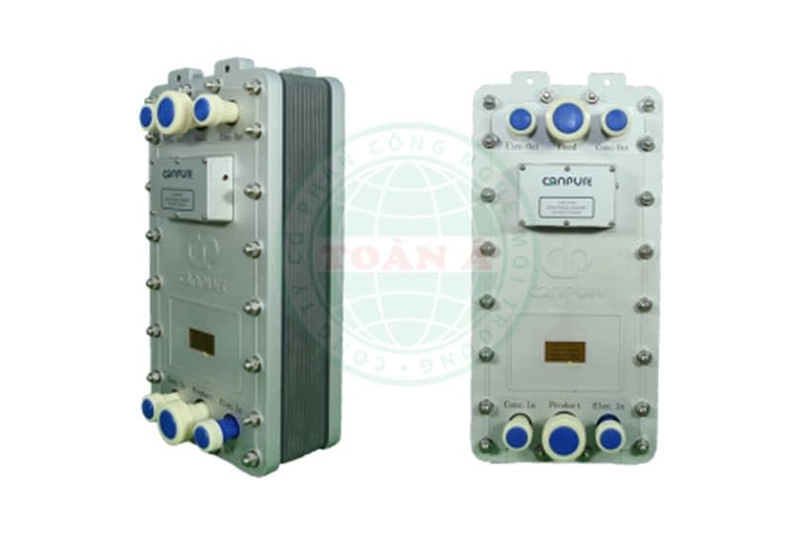
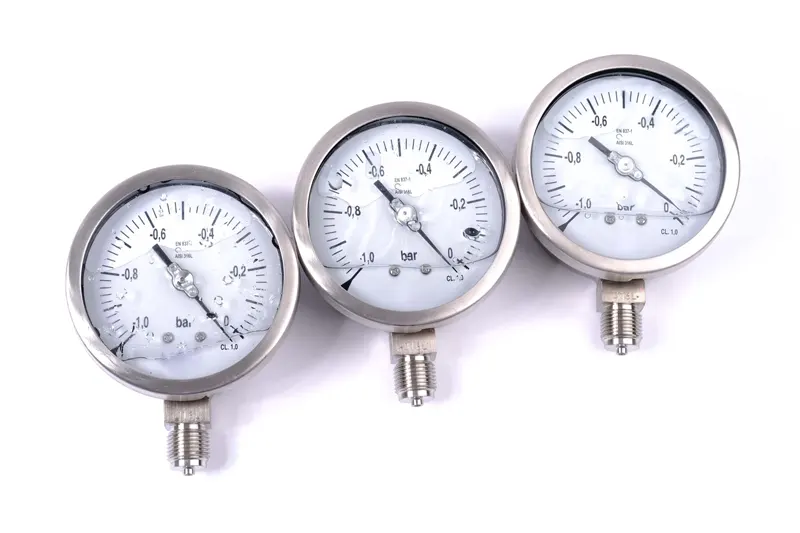
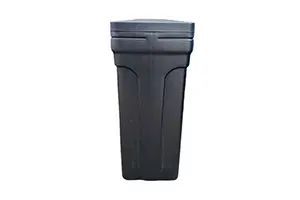


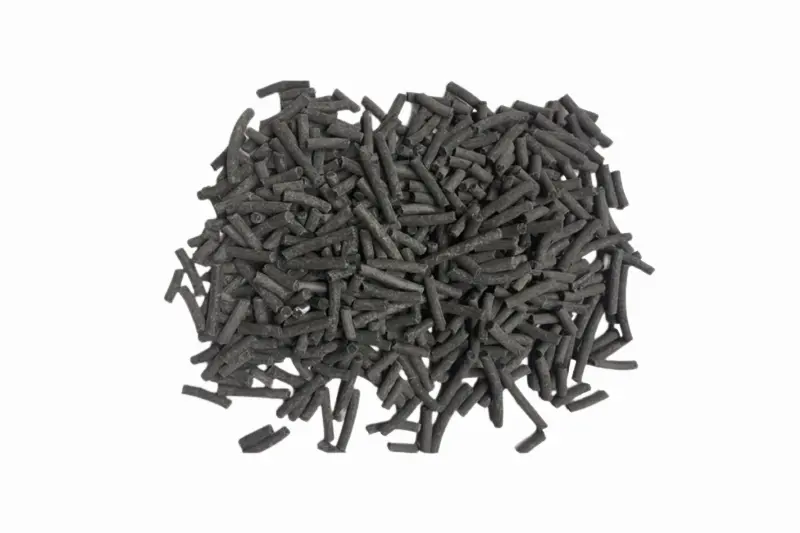
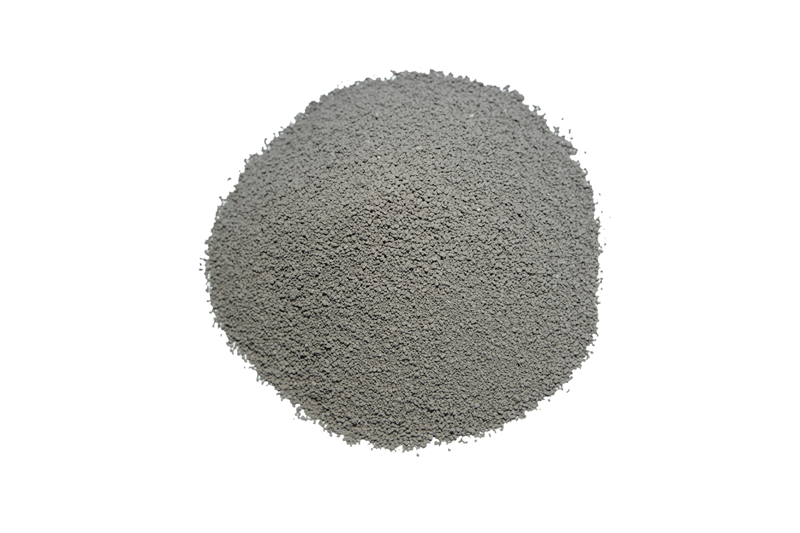
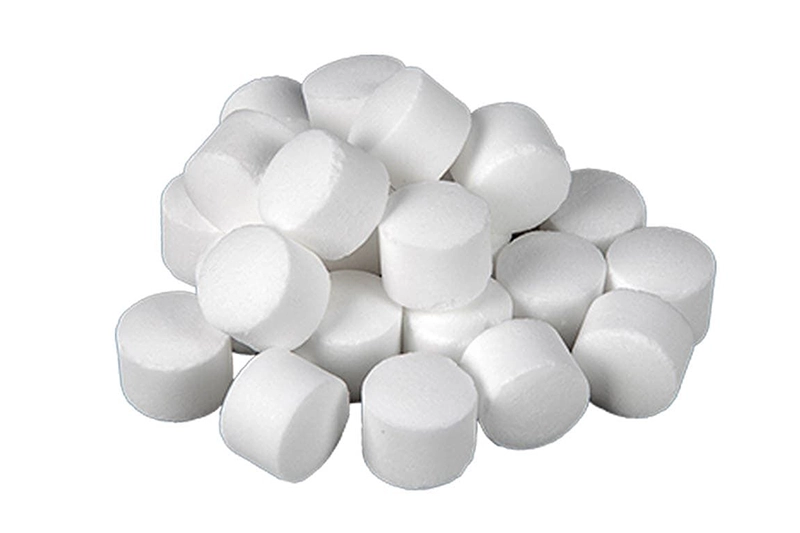
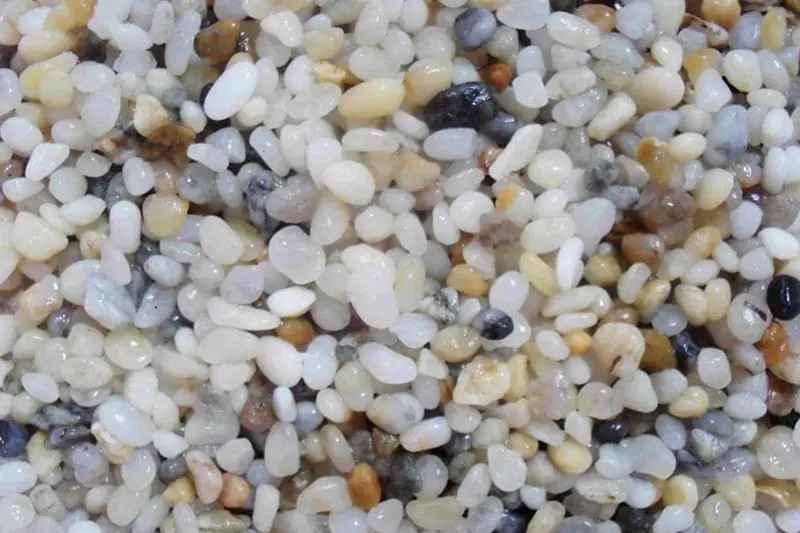









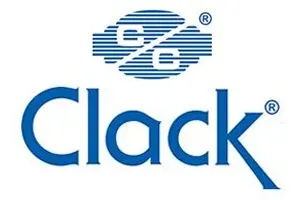


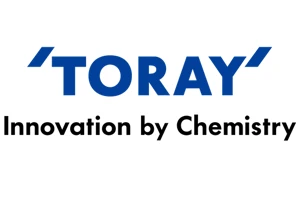

 Water Filter Columns
Water Filter Columns
 Water Filtration Membranes
Water Filtration Membranes
 Control Valves
Control Valves
 Water Filter Cartridges
Water Filter Cartridges
 Water Pumps
Water Pumps
 Water Filtration Equipment
Water Filtration Equipment
 Water Filtration Components
Water Filtration Components
 Water Filtration Materials
Water Filtration Materials
 Heat Pump Water Heaters
Heat Pump Water Heaters



 Products
Products  Solutions
Solutions  Project
Project  News
News